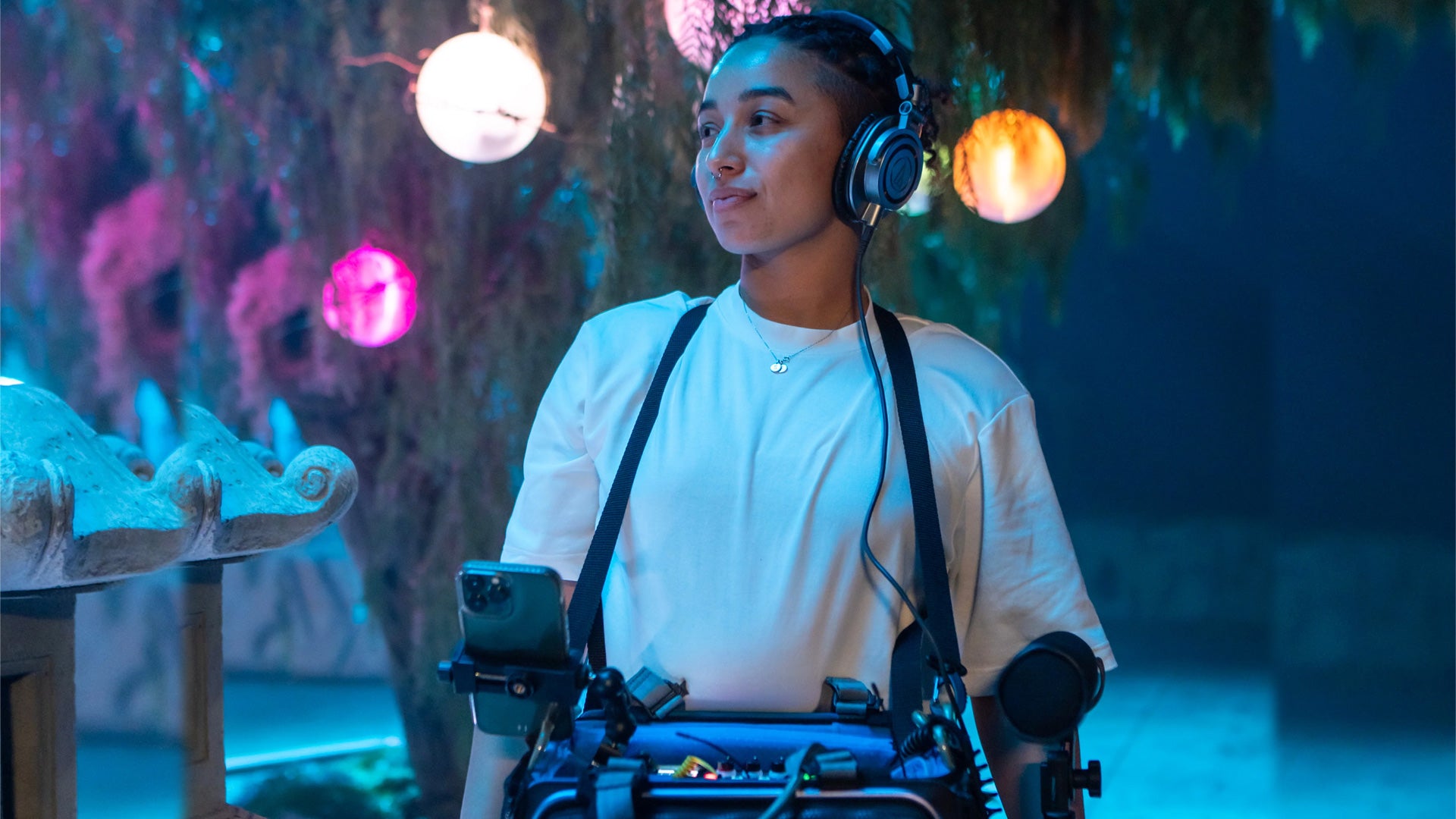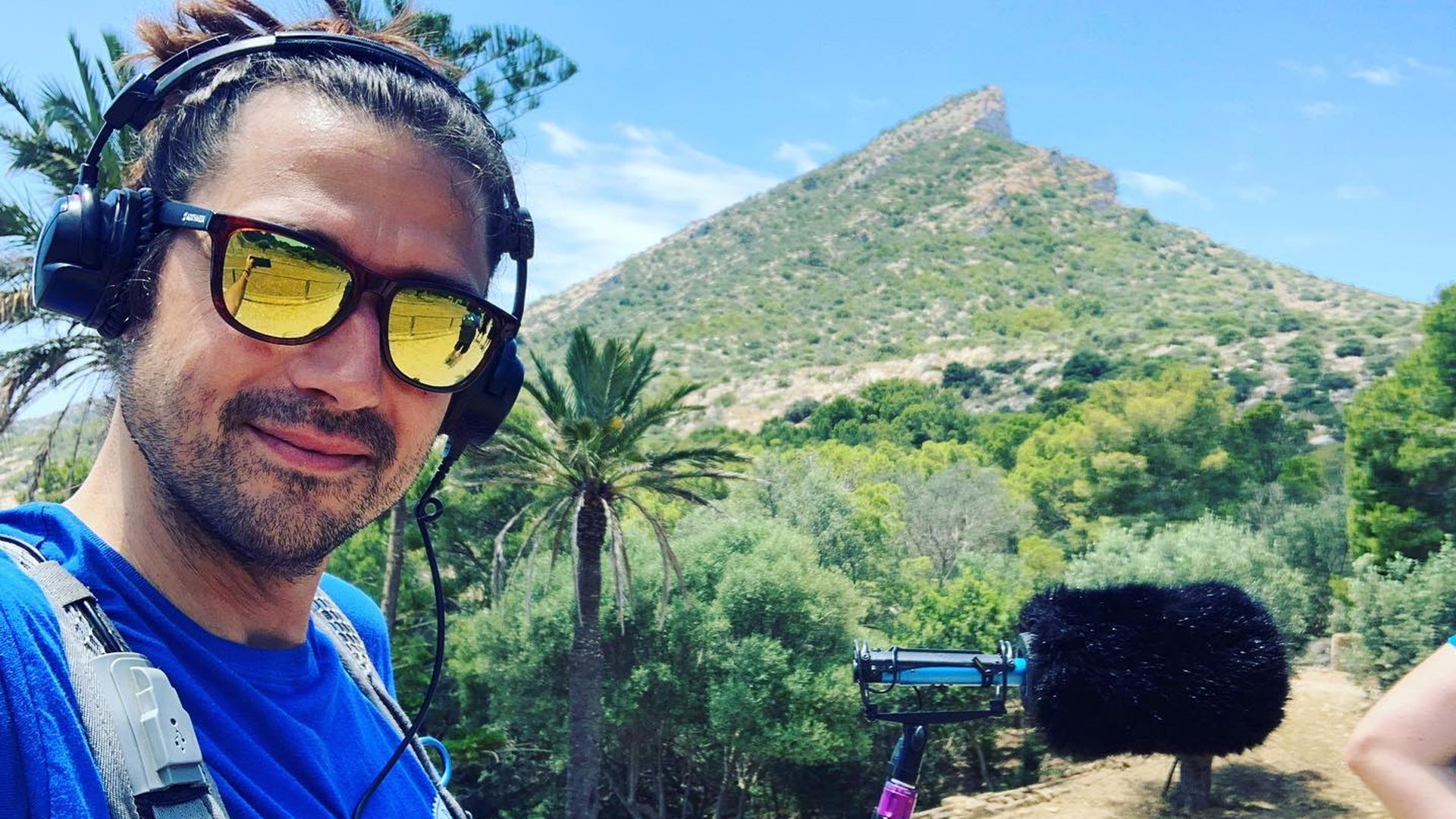
Seasoned producer and sound mixer James Sieczka has nearly two decades worth of experience in capturing sound for Film, Television Commercials, Sports and Reality TV programming. Known to his friends and colleagues as Jimmy the Sound Guy, he specialises in adventure shows, particularly those set in extreme or remote locations around the world.
Jimmy got into film making as a teenager when serious injury cut short the NHL hockey career he had been hoping for. He studied at Columbia College Chicago and during his time there he completed a semester on audio, which is when he became hooked on production sound. After graduating in 2005, he moved to Los Angeles to pursue his dream and the rest, as they say, is history.
With clients such as NHL, ESPN, Showtime, Netflix, Amazon Studios, Warner Brothers, Disney, National Geographic, and Discovery, Jimmy is always busy and always in demand. His most recent project – recording sound for the 9th season of Discovery’s popular reality TV programme Naked and Afraid – has just wrapped, so he found time to talk to us about his life, his work, and how Bubblebee products have helped him deliver great sound in often difficult and challenging conditions.
Looking at your impressive list of credits, it seems as though you travel around a lot for work. Where are you usually based?
Since moving to California in 2005 I have called two places home – Los Angeles and also the Philippines where I spent five years teaching audio production and post-production sound at a film school. While I was in the Philippines, I met two of my most important mentors, Greg Curda and Les Wolf, both of whom have decades of experience in sound. Both have been nominated for - and won - Emmys and Oscars and they taught me a lot of what I know today. I also worked on various adventure shows, feature films, and several ocean-based reality shows, and the tropical experience I gained has informed the work I do now. I returned to Los Angeles in 2013 and this is where I am currently based.
You’ve worked on many series of Naked and Afraid. Do you solely work on adventure-based reality shows, or do you undertake projects in other genres as well?

I mainly work on adventure shows that are set in remote places around the world. This wasn’t my goal, but after several successful years working in this space, I became the ‘Adventure Soundguy’ by default. Just before COVID struck, I worked on an incredible show for Amazon called The Pack with Lindsey Vonn. This was a race-style adventure show where the cast were paired up with their dogs and travelled to eight different countries over six weeks, completing tasks and trying to win a potential $250 thousand dollar cash prize. I also worked on Cars That Rock with AC/DC’s lead singer Brian Johnson, who was an absolute legend to work with and one of the funniest people I've ever met. As exciting as traveling the world can be, it does get tiring living out of a suitcase and being far from home, so whenever possible I like to take on different projects like sports, documentaries, and occasionally feature films and scripted television. In 2021, I finally got to work on some sports shows, including NHL’s Quest for the Stanley Cup and UFC’s Ultimate Fighter. I also worked for Disney on The Quest, a unique project that combines an episodic scripted TV Show with a reality show featuring eight teenagers who all undertake various challenges. The entire show is set in a Lord of The Rings-type world, so the sets, costumes and special effects were amazing. Switching up production jobs whenever possible is paramount to keep things fresh and fun, otherwise it’s possible to get pretty burnt out just doing adventure shows.
How many series of Naked and Afraid have you worked on?
At this point I've lost track! I started in 2015 and I’ve done around 8000 hours in remote locations worldwide. The Naked and Afraid brand has several spin offs that I've also worked, including Naked and Afraid XL, which deals with multiple cast camps that eventually merge to form a larger team. I’ve also worked on the Naked and Afraid Frozen series, which takes place in snow covered environments. That’s an entirely new beast because of the extreme cold, but thankfully I’m from Chicago and have had plenty of experience in cold weather climates.
When you are filming Naked and Afraid, do you use a boom mic – and if not, how do you hide a lavalier mic and wireless pack on a naked person?
Each cast member carries a small shoulder bag that contains a Lectrosonics WM waterproof transmitter. This is connected to a waterproof DPA lavalier mic which is strung through the shoulder strap and hidden in a necklace that is made by one of our in-house team. This solution captures the majority of the dialogue and the only time we use a boom is when we are capturing natural sounds of the environment or when the cast is swimming and can’t have their transmitters in the water.
How did you first come across Bubblebee products?
I came across Bubblebee a few years ago when I was searching for a wind proofing system that was small, but also flexible enough to add more wind protection with minimal increase in weight and size. The Bubblebee Spacer Bubble was exactly what I’d been looking for because it came with additional fur that could be used when it was very windy. The fur could also be removed quickly when not needed or when exterior shots moved into interior situations on the fly, without any time to reset. Since discovering the Spacer Bubble, I never leave home without it.
Another product I use all the time is the Windbubble lavalier accessory, which has been a staple for the Naked and Afraid audio team for several years. We use it in conjunction with the DPA 4060 lav series, hiding both the 4060 element and the Windbubble inside a small nut in the centre of the cast member’s necklace, which they wear at all times during shooting. This set up is paramount, and I never leave home without some Windbubbles in my kit because they have saved my ass on dozens of occasions, especially in Africa where my biggest challenge is the wind. We typically don’t shoot Naked and Afraid when it’s raining and because of the massive wide open Savanna in Africa, the wind issues are only amplified. I’ve used several other products to protect my mics from wind but none of them perform as well as the Windbubble so I won’t be changing that anytime soon!

What is it like to work on Naked and Afraid, and is there such thing as a typical day?
Working on Naked and Afraid is certainly not for everyone and it’s by far the most challenging show I've worked. Every day is a new adventure – no two episodes are ever the same and every location is completely different, which is what brings me back year after year. Then you throw Mother Nature into the equation, and at a moment’s notice you can be facing rain, snow, or extreme heat, so you are left with an insanely unique experience that is always evolving and changing.
Do you secretly root for any of the contestants and want them to win?
Yes, all the time. The success of the show rests on the cast’s ability to overcome all obstacles that may arise during their challenge, so, I root for each cast member, and that goes for the entire production staff. We all want them to reach their goal of completing the challenge, and the biggest reward is helping make their dreams come true if they cross the finish line. The, alone, is worth the price of “admission.”
You must occasionally find yourself in dangerous situations. Can you describe the worst one you have been in?

Every crew member is aware of the dangers that lurk in the field, but you can’t spend your entire day worrying about potential threats or your productivity on set and in life will be diminished. I’ve had more close encounters with deadly animals than I can keep track of, but these are all part of the job, and you rely on extra caution and common sense to keep you safe. Having said that, the worst situation I’ve been in was actually caused by extreme weather during filming in Trinidad and Tobago in 2015. We were in the jungle and it rained nearly every day, which eventually causes trees to fall without warning. On this particular day the cast was out on a hunt and my camera operator, Kip Robbins, and I were following. We came to a small body of water that I didn’t want to walk through, so I took to higher ground through the dense jungle. Along the way there was a fallen tree on the game trail and since the jungle was so thick, I only had two options - to go over the tree, which was an impossibility because of all the equipment I was carrying or go under it and continue on the trail. I chose the latter but unfortunately whatever was holding the tree in place snapped at a critical point and it fell onto my chest, slowly suffocating me. I was lucky that the game trail was lower than the rest of the jungle floor, as this saved my life, but I was pinned under the tree and couldn’t move. Kip and our field producer heard me calling for help and came to my aid. My producer arrived first but didn’t have the strength to remove the tree from my chest. At this point I really started to panic because it was clear I was in serious trouble. I was losing feeling in half my body and gasping for air. Kip finally arrived and the two of them were able to free the tree from my chest so that I could slide to safety. The injury put me out of work for 26 months.
Of all the projects you have worked on, which have you enjoyed the most?
Ice hockey has been – and still is - a huge part of my life, so my favourite project has to be the NHL Quest for the Stanley Cup show during the Stanley Cup Playoffs. This was by far my greatest and most memorable accomplishment.

What piece of equipment in your kit bag would you save first if it was about to disappear into quicksand, and why?
That’s a hard question but if I could only save one thing, it would have to be my boom pole. My reason for it is because, if this were a real situation, I’d at least be able to tap into a camera with my boom pole and capture useable audio. Saving a recorder wouldn’t do me any good because I’d still need wireless or a boom to record anything.
What advice would you give anyone starting out in the sound industry?
The film industry is a beast, and it is beyond challenging to get your foot in the door, but if you stay patient, work hard and are a good person to others, it will all come together in time.



